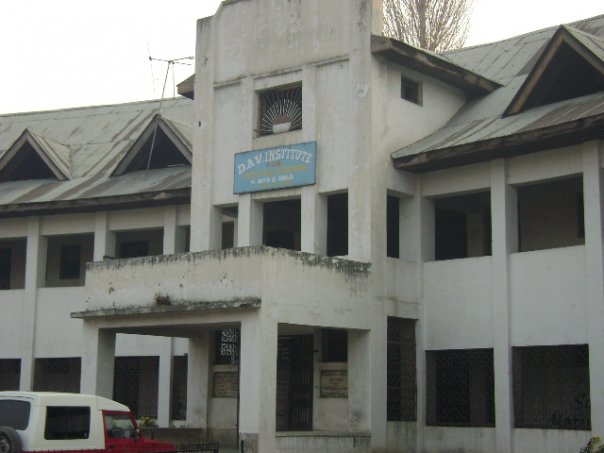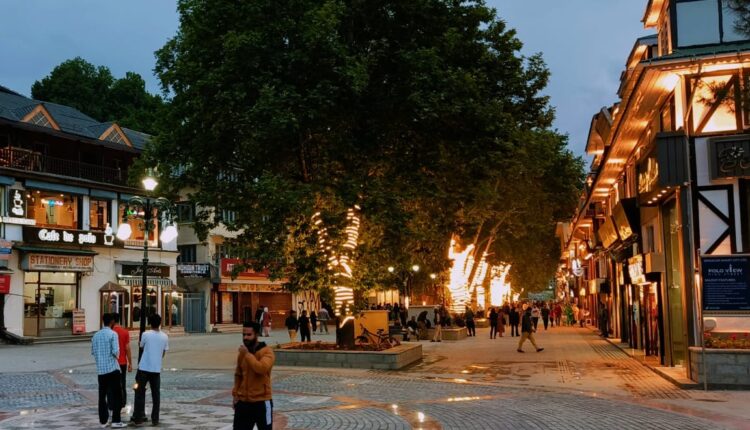The signs of daily life emerge early in Srinagar’s old city, the ground zero of frequent and often violent protests, as shopkeepers assemble the merchandise and ‘harrisa’ shops serve the exquisite mutton delicacy soon after the dawn’s first light.
 On Monday, as fog enveloped much of the Kashmir region, it was still a pleasant morning in old city neighbourhoods as residents, mostly young men, lined up inside famed eateries for harrisa, served hot and preferred on wintry mornings.
On Monday, as fog enveloped much of the Kashmir region, it was still a pleasant morning in old city neighbourhoods as residents, mostly young men, lined up inside famed eateries for harrisa, served hot and preferred on wintry mornings.
A series of bridges over the Jhelum mark a boundary and divide Srinagar into two unequal halves. The new, spacious and urbane Srinagar lives on the river’s western and southern side. On the river’s northern side, the old Srinagar — known by several names — thrives in clustered neighbourhoods.
In a common nomenclature, the old city is simply the downtown. For the state government, it is the Shahr-e-Khaas.
The downtown’s dozens of neighbourhoods are interconnected by mazes of narrow alleys — one reason which makes it a favourite of stone-throwing protesters who disappear into the mazes when chased by policemen.
The history and present of downtown has remained fixated on the anti-establishment nature of its residents, which often erupts in the shape of protests. The protests in downtown localities have occurred for decades now – against the monarchs who ruled Kashmir till 1947 and then against the successive regimes.
“It is in their DNA. These people have been anti-establishment and they will remain so. Nothing is going to change that and I don’t think we should spend energy on changing them,” said a senior police officer, who has served multiple postings in downtown.
In recent years, downtown’s five police stations — Rainawari, Nowhatta, Khanyar, MR Gunj and Safa Kadal — have become synonymous with frequently imposed restrictions.
Though there is no official confirmation about the number of days that downtown localities have remained shut due to bandhs called by separatists or restrictions imposed by the state government, Mirwaiz Umar Farooq, who has influence over several pockets in downtown and is the chief preacher at Jamia Masjid, said the number stood at 40 this year. The frequent restrictions and shutdowns have also impacted the business activity in downtown.
The latest trouble for the residents of the old city, which has been described as a “collective punishment”, is the use of pepper gas shells by the police to disperse the protesting crowds. The gas causes choking effect on entire neighbourhoods.
“It feels like I am being tortured to death and one is not able to breath,” said Shahnawaz, 25, a resident of Safa Kadal. “If this is what it does to young people, one can only imagine its impact on the old and children,” he said.
The pepper gas has been severely troubling elders and children, who are the residents of the downtown.
Some cases have also emerged from downtown where fatalities have allegedly occurred due to pepper gas.
Farhat, a downtown resident, describes the impact of pepper gas as “hell unleashed”. Last month, a pepper gas shell landed in the compound of Farhat’s home. “It is as if someone is hanged…it chokes the throats, causes severe cough, breathlessness and vomiting,” he said.
He said there is no escaping the choking fumes of the pepper gas shells, even if “we close our doors and windows”.
Residents of downtown also alleged that police and paramilitary personnel fire pepper gas shells without provocation on curfew days when their deployments are withdrawing.
A team of doctors recently researched the impact of pepper gas on “non-combatant bystanders” in Kashmir and found that 97 per cent developed cough and irritation of the throat “within few seconds of breathing the pungent smelling gas”.
“They reported respiratory problems, dermatological symptoms, sleep disturbances and mood changes with varying frequency. Sixteen persons reported exacerbations of underlying respiratory disorders, with one temporally related to death,” according to the study abstract.
Doctors also recommended alternate methods of riot control “that have no collateral side effects” on non-combatants.
The state government, however, maintains that the pepper gas being used in the region is “non-lethal munition”. In response to a petition filed before the State Human Rights Commission, the police said the pepper spray used so far “does not have any long-term irreversible effect”.
Srinagar downtown living in protests and choking pepper gas






